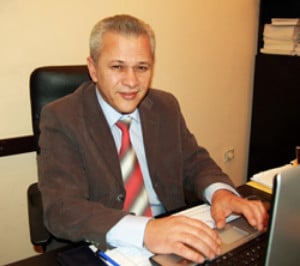Selected Papers from the 7th International Symposium on Mining and Environmental Protection
A special issue of Minerals (ISSN 2075-163X). This special issue belongs to the section "Mineral Processing and Extractive Metallurgy".
Deadline for manuscript submissions: closed (29 February 2020) | Viewed by 38853
Special Issue Editor
Interests: mining; mechanization; environment; secondary raw materials; treatment and recycling of industrial and mining wastes
Special Issues, Collections and Topics in MDPI journals
Special Issue Information
Dear Colleagues,
We are pleased to inform you about the 7th International Symposium on Mining and Environmental Protection. The 7th International Symposium on Mining and Environmental Protection will be held on 25–28 September 2019 in Vrdnik, Serbia, and is being organized by the University of Belgrade, Faculty of Mining and Geology in Belgrade—Center for Environmental Engineering.
The previous symposiums were very successful. Scientists and companies from many countries gathered to share experiences, information, and research results. The objective of this symposium is to bring together engineers, scientists, and managers from the mining industry, research organizations, and government organizations, working on the development and application of best practice in the mining industry regarding environment protection.
The previous the 6th International Symposium of Mining and Environmental Protection MEP in 2017 had about 100 participants from home and abroad.
The official website of the symposium can be found at the following link: www.rgf.bg.ac.rs/mep/.
Prof. Dr. Ivica Ristović
Guest Editor
Manuscript Submission Information
Manuscripts should be submitted online at www.mdpi.com by registering and logging in to this website. Once you are registered, click here to go to the submission form. Manuscripts can be submitted until the deadline. All submissions that pass pre-check are peer-reviewed. Accepted papers will be published continuously in the journal (as soon as accepted) and will be listed together on the special issue website. Research articles, review articles as well as short communications are invited. For planned papers, a title and short abstract (about 100 words) can be sent to the Editorial Office for announcement on this website.
Submitted manuscripts should not have been published previously, nor be under consideration for publication elsewhere (except conference proceedings papers). All manuscripts are thoroughly refereed through a single-blind peer-review process. A guide for authors and other relevant information for submission of manuscripts is available on the Instructions for Authors page. Minerals is an international peer-reviewed open access monthly journal published by MDPI.
Please visit the Instructions for Authors page before submitting a manuscript. The Article Processing Charge (APC) for publication in this open access journal is 2400 CHF (Swiss Francs). Submitted papers should be well formatted and use good English. Authors may use MDPI's English editing service prior to publication or during author revisions.
Keywords
- Mining
- Environmental protection
- Sustainable development
- Circular economy
- Soil contamination, remediation, and reclamation
- Mining water
- Public health
- Mining geology
- Biomining





